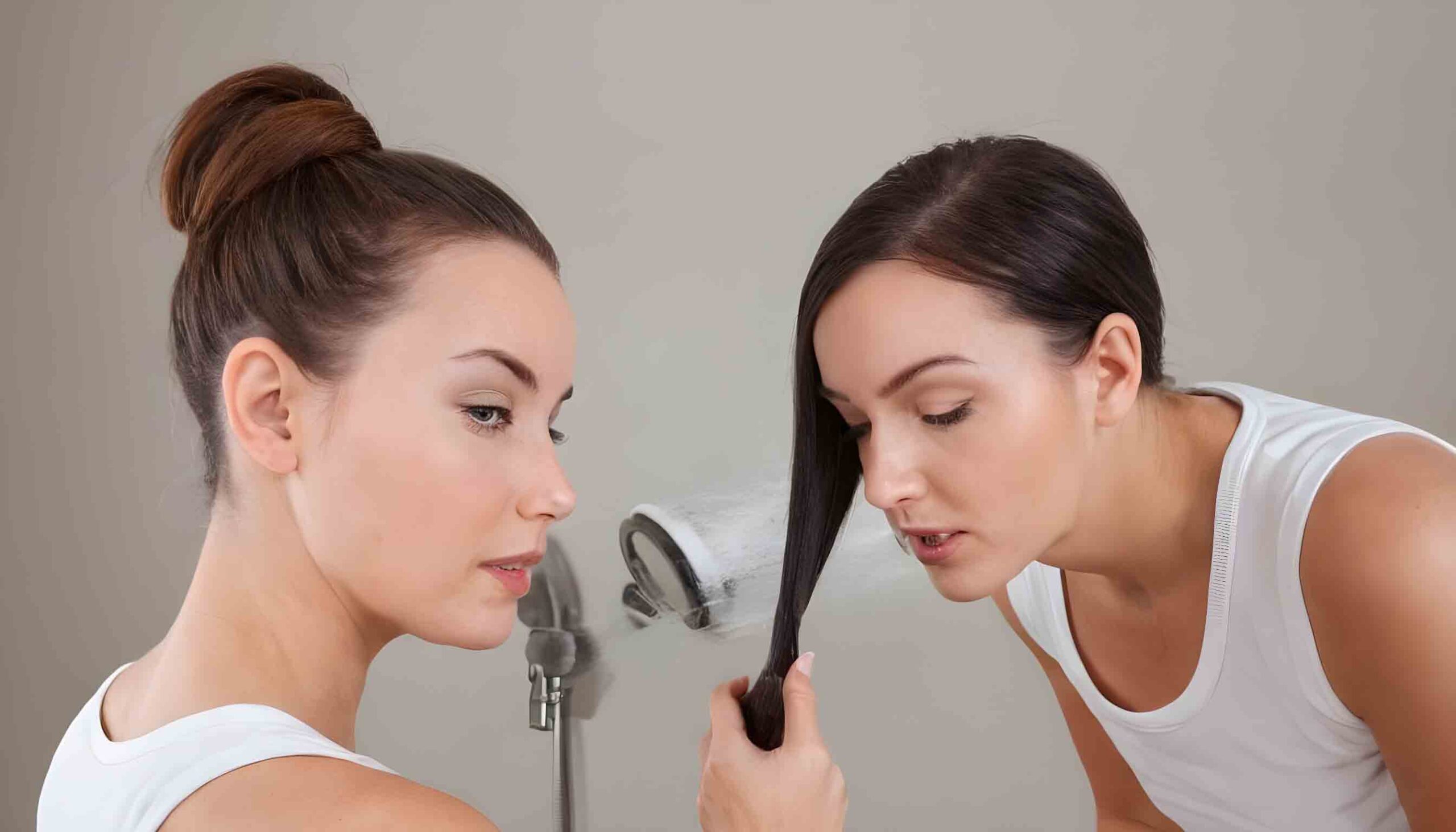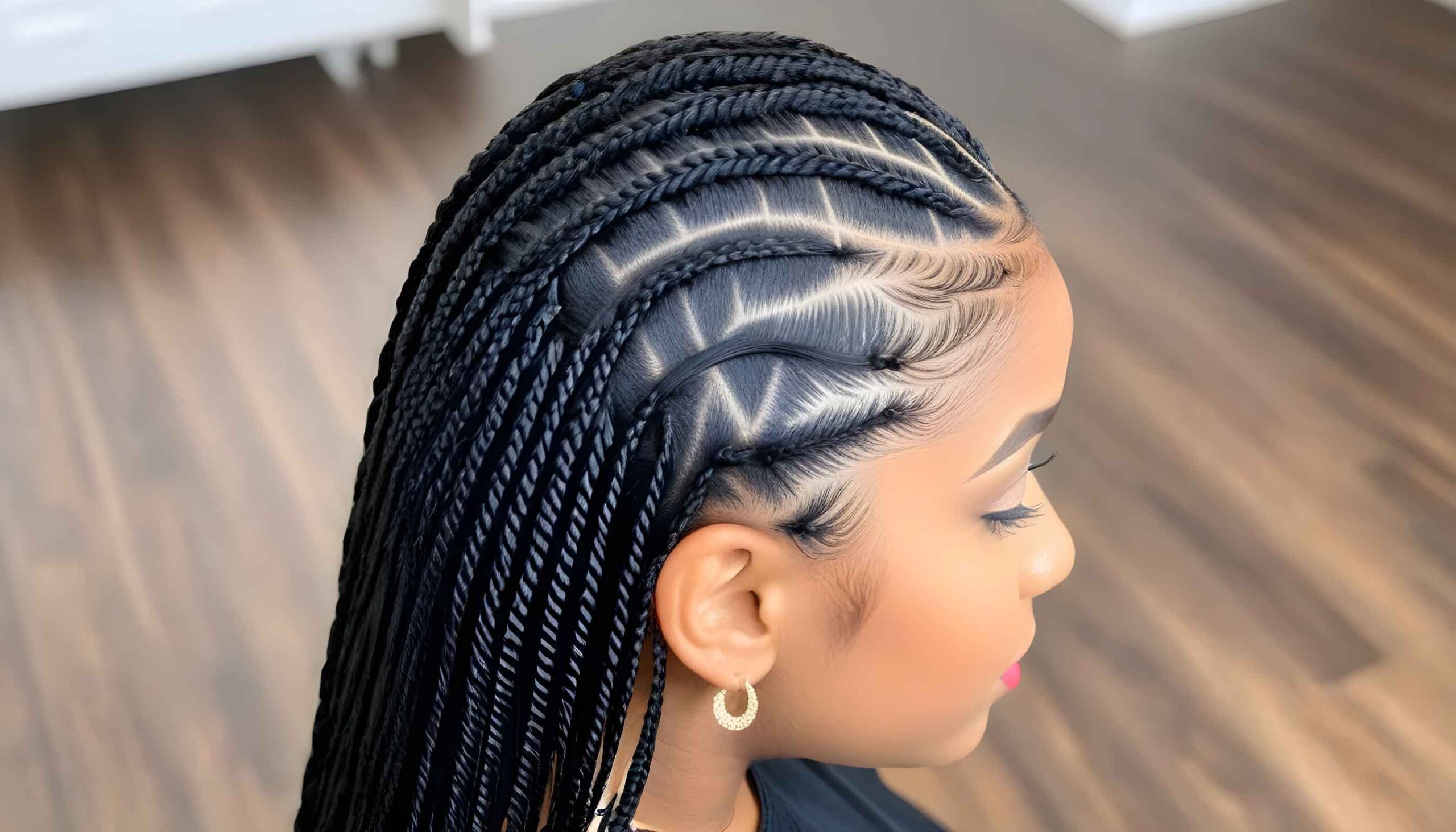Discover everything you need to know about properly caring for your hair! This comprehensive hair maintenance guide covers how to wash, condition, style, and protect your locks. Learn tips based on your hair type and texture, including curly, straight, fine, thick, and color-treated hair. Get advice on essential hair products, tools, and accessories to stock your arsenal.
Pick up tricks to boost shine, volume, and hair maintenance health for beautiful, hydrated strands from roots to ends. From properly cleansing and moisturizing to minimizing styling damage and split ends, this is your resource for establishing an effective hair care regimen. You’ll also find solutions to common hair concerns like frizz, thinning, and breakage. Use these hair maintenance tips and best practices to get the healthy, strong, radiant hair you’ve always wanted!
Hair Maintenance: A Comprehensive Guide to Healthy, Shiny Locks
Washing Your Hair
Shampoo
Shampoo is the foundation of any hair care routine. It cleanses the hair and scalp of dirt, oil, and product buildup. However, not all shampoos are created equal.
The ideal shampoo will gently cleanse without stripping the hair of its natural oils. Look for formulas labeled “gentle”, “moisturizing”, or “sulfate-free”. Sulfates are harsh detergents commonly found in shampoos. While effective cleansers, sulfates can dry the hair and irritate the scalp. Those with color-treated or curly hair especially benefit from sulfate-free shampoos.
Shampoos containing parabens are also best avoided. Parabens are preservatives that may disrupt hormone function. Natural shampoos without these ingredients are widely available today.
Determine how often to shampoo based on your hair type. Daily shampooing works for those with fine, oily hair. However, shampooing more than 2-3 times per week is rarely needed for those with drier, coarser, or curlier hair. Over-shampooing strips the hair of its natural oils, leading to dryness and breakage over time.
Conditioning
While shampoo cleanses, conditioner nourishes. It smooths and detangles, replenishes moisture, and boosts shine. Conditioner should be applied from roots to ends after shampooing. Allow it to soak for 1-3 minutes before rinsing.
Like shampoo, opt for a conditioner free of parabens and sulfates. Choose a formula designed for your hair type and condition. Fine, greasy hair benefits from lightweight conditioners. Medium or damaged hair needs medium-weight moisture. Very coarse and curly hair requires heavy conditioning.
Those with highly porous or damaged hair can benefit from leave-in conditioning treatments. These are applied post-shower and left on the hair. They provide an extra layer of hydration and protection.
Deep Conditioning
Deep conditioning treatments give an added dose of intensive moisture. They are especially beneficial for those with dry, damaged, or curly hair. Quality salon treatments go deepest. But homemade and store-bought options also deliver hydration.
Deep conditioning can be done as often as 1-2 times per week or as little as once a month. Apply generously to washed, damp hair. Allow to soak for 15-30 minutes. Rinse well and style as usual. Some leave-in deep conditioners can be left on the hair for continued benefits.
Maintaining Healthy Hair
Caring for your hair goes beyond just washing and conditioning. Adopt these tips for maximizing the health and beauty of your locks.
Limit Heat Styling
Frequent use of hot styling tools like blow dryers, curling irons, and straighteners takes a toll. The extreme heat damages the hair structure, causing dryness, breakage, and split ends over time. Allow hair to air dry when possible. When heat is used, always apply a protective spray or serum first. This helps shield against thermal damage.
Handle Gently
Aggressive brushing and handling stresses the hair. Use combs and brushes with wide, gentle teeth. Start combing at the ends and work up to avoid excessive tugging. At night, switch to a satin pillowcase. The smooth fabric results in less friction and pulling than cotton. Never brush wet hair, as the strands are most vulnerable to breakage when wet.
Eat Nutrient-Rich Foods
Just like the rest of the body, hair needs proper nutrition. Make sure to consume plenty of protein, vitamins A, C, D, and E, iron, zinc, biotin, and omega-3s. These nutrients build strong structures from the inside out. Lean meats, fish, nuts, seeds, beans, lentils, whole grains, fruits, and vegetables provide dietary building blocks for fab hair.
Protect Against UV Rays
Sun exposure degrades hair protein and leaches moisture, causing damage. When spending time outside, cover your hair or use protective products with UV filters. Scout for words like “solar” or “UV shield” on labels. Hats and headscarves also limit direct sun exposure.
Avoid Over-Processing
Frequent dyeing, perming, relaxing, or other chemical treatments overload the hair. Hair becomes weak and brittle from residual chemical damage. Extend time between chemical services. Alternate with gentler methods like highlights or semi-permanent rinses. Use deep conditioning treatments regularly to combat chemical wear and tear.
Control Split Ends
Split ends naturally occur as hair ages and its protective outer layer erodes. While not reversible, regular trims snip away split portions. This keeps ends intact and prevents further splitting and breakage. Most hair needs a trim every 6-8 weeks. Curly hair may go a bit longer between cuts thanks to its twisty shape.
Add Moisture
Dry hair easily breaks and looks frizzy or dull. Ensure hair stays hydrated by washing less often, limiting heat styling, and using moisturizing products. Deep conditioners and leave-in treatments boost moisture levels. Oils like argan, coconut, and olive lightly coat the hair to seal in hydration and softness when applied to damp strands.
Handle with Care at Night
Take steps to protect your hair while you sleep. Silk or satin pillowcases prevent moisture loss and friction. Pull long hair into a loose braid or bun. Resist going to bed with wet hair. This can cause hygral fatigue as the hair swells and constricts against the pillow.
Styling Your Hair
Styling fine hair, thick hair, straight hair, curly hair, and chemically processed hair each require different techniques and products for optimal results. Follow these tips to style your mane just right.
Fine Hair
Those with fine, limp locks require lightweight products. Thick creams and oils tend to weigh such hair down. Volumizing mousse and salt spray boost body and fullness before heat styling. When blow drying, use a round brush. Lift sections up and away from the scalp for extra lift at the roots. Avoid heavily layered cuts, which can thin fine hair further.
Thick Hair
Coarse, dense hair needs moisture to counteract potential dryness. Before heat styling, apply an anti-frizz serum followed by volumizing mousse at the roots only. Backcomb short sections when curling for added volume. Use medium-large hot rollers to add bend without crunch. Get layers cut in to prevent thickness from dragging hair down.
Straight Hair
Soft waves add dimension and movement to straight hair. Apply mousse and wrap sections around a 1-1.5 inch barrel curling iron. Pin curls boost volume overnight. Allow hair to air dry naturally whenever possible – less heat helps keep straight hair smooth and shiny. Finish with a touch of serum to control flyaways.
Curly Hair
Work in a curl cream or frizz-fighting serum starting midway down curls and continuing to the ends. Let air dry or gently scrunch with a microfiber towel to encourage curl formation. At most, soften and shape curls with a diffuser attachment on low speed and heat settings. Finger styling encourages a natural curl pattern.
Chemically Treated
Over-processed strands need extra moisture and protection. Use reparative masks and leave-in conditioners to restore strength. Allow air drying whenever possible. Always apply heat protectant if using hot tools. Choose gentle styling – finger curling, soft scrunching, low-speed diffusing – over tugging with brushes. Avoid elastics, clips, and tight styles that stress fragile strands.
Maintaining Beautiful Long Locks
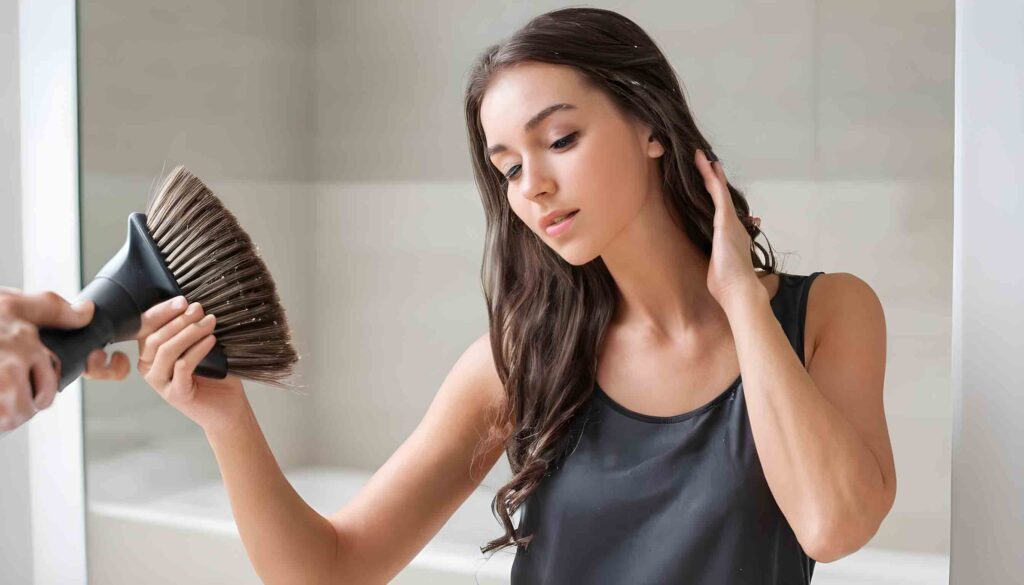
Having long, flowing hair can feel glamorous, but it also requires diligent maintenance to keep it looking its best. Long hair tends to be drier and more prone to damage since there are more inches of length exposed to potential wear and tear. That’s why it’s crucial to incorporate extra conditioning, protect fragile ends, and handle hair gently.
Deep condition hair at least once a week to inject intense moisture from roots to ends. Let a hydrating hair mask soak for 20-30 minutes before rinsing thoroughly. Sleep with a nourishing overnight oil treatment on ends to reinforce hair and seal in softness. Limit the use of heating tools that can parched long strands. Allow hair to air dry when possible or use a diffuser on low heat settings if blow drying.
Always detangle gently, starting at the bottom and working up. Use a wide-tooth comb or fingers, never a brush, on wet hair to avoid snags and tears. Trim split ends every 6-8 weeks to prevent further damage. Avoid wearing tight hairstyles that pull on the delicate scalp area and compromise hair follicles when worn frequently. Protect hair from chlorine and sun exposure by wetting it first or using protective products.
With the right hair maintenance strategy focused on moisture, gentle handling, and regular trimming, your long, beautiful tresses will continue looking healthy, shiny, and magnificent. Take special care and your locks will thrive!
Keeping Red Hair Looking Radiant
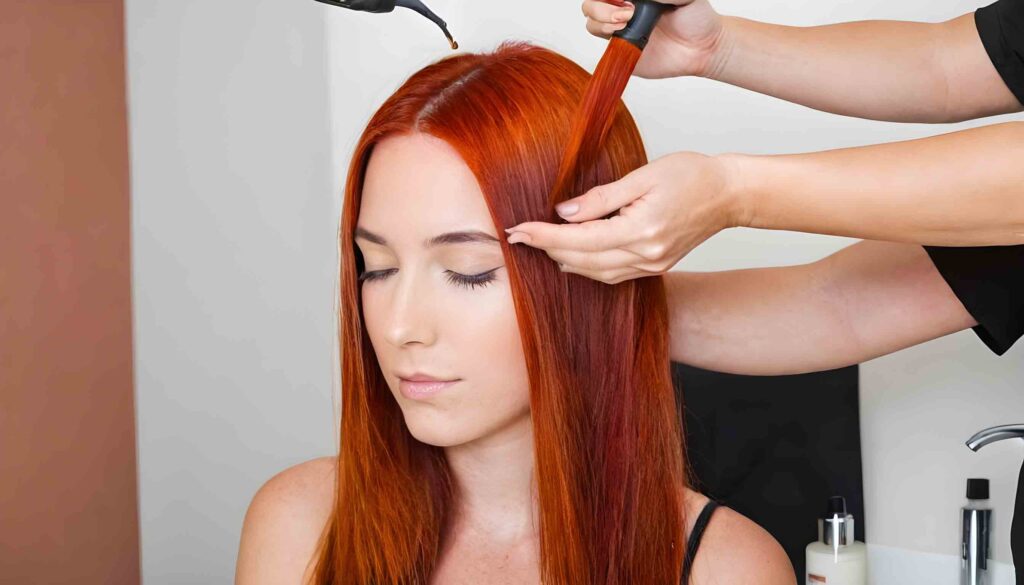
Red hair makes a vibrant statement but requires diligent upkeep to keep its rich color looking salon-fresh. Red hair tends to fade the fastest of any shade, thanks to the large pigment molecules that wash out easily. You’ll need to take extra steps to preserve that bold crimson or coppery color.
Wash red hair less frequently, just 1-2 times per week, with shampoo and conditioner specially formulated for color-treated hair. These contain polymers that help seal in color. Rinse with cool water instead of hot to prevent fading. Apply a deep conditioning mask once a week to keep strands hydrated and strong.
Protect red hair from chlorine and sun exposure, two elements that can speed fading. Wet hair before swimming and apply leave-in conditioner beforehand. Wear a hat when outdoors and use styling products with UV filters.
Additionally, switch to a glossing shampoo or conditioning treatment with red pigments. These help refresh and boost color between salon visits. Avoid over-washing and over-styling, friction from towels, and chlorine/sun damage. With the right hair maintenance strategy, your fiery red mane will glow for weeks and months.
Caring for Stunning Silver Tresses
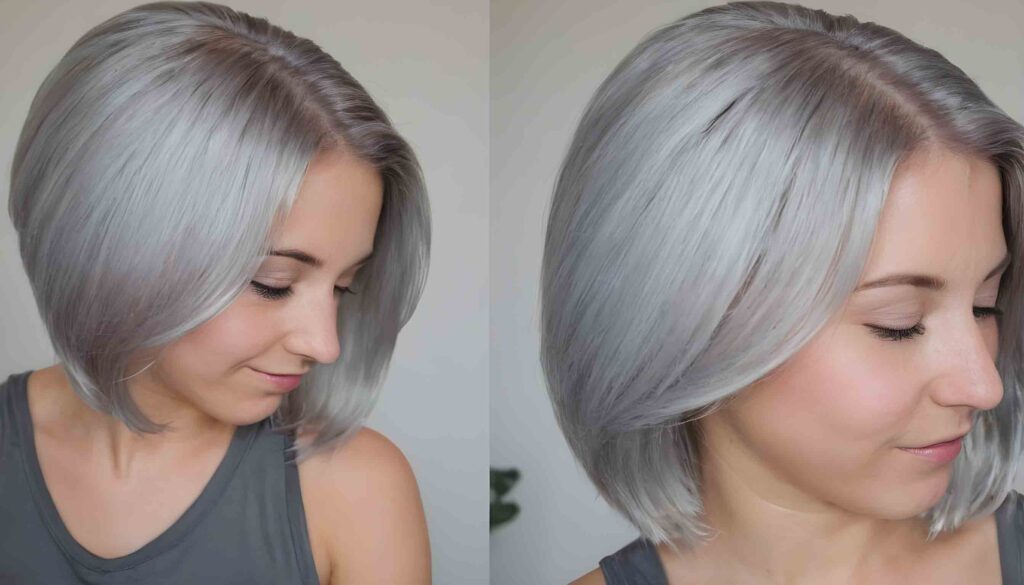
Embracing a silvery mane requires some special care to keep hair looking its shiniest. As hair goes gray, the texture typically becomes drier, more porous, and prone to a dull, yellowed cast. Tailor your routine to play up silver’s beautiful brilliance.
Shampoo less often, just 1-2 times per week, to avoid stripping needed moisture from aging locks. Use a sulfate-free formula made for silver hair. Look for violet or blue-hued shampoos that counteract yellow undertones.
Condition deeply at least once a week with a mask containing hydrating oils and proteins. Let it soak for 20-30 minutes before rinsing out. Sleep with an antioxidant-rich oil like argan or coconut on your lengths to reinforce hair as you sleep.
Limit use of hot styling tools that can further dry and damage silver strands. Allow hair to air dry whenever possible. If heat styling, always apply a protective product first. Handle hair gently, detangling with fingers or a wide-tooth comb.
Boost shine between washes with a mist containing nourishing oils. Look for lightweight styling products that add luminosity without buildup. Embrace silver’s striking shine by tailoring your routine to its unique needs.
Preserving the Beauty of Copper Hair
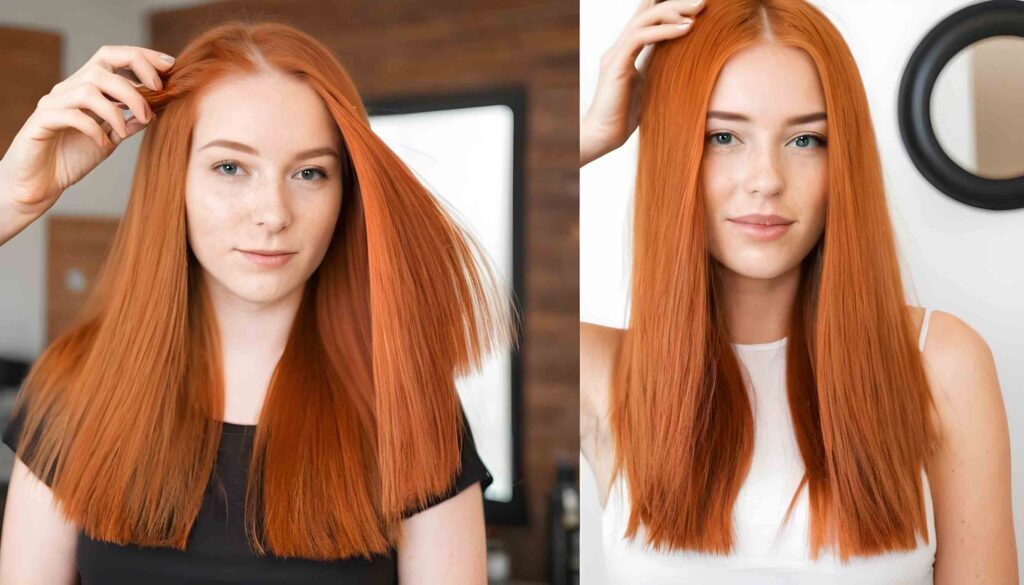
Copper hair makes a vibrant statement, but requires diligent maintenance to keep its shiny color looking fresh. As a vivid red hue, copper hair tends to fade quickly as the large color molecules wash out over time. Tailor your routine to extend the life of your copper tresses.
Wash less often, just 1-2 times per week, with sulfate-free shampoo and conditioner made for color-treated hair. These help seal in copper’s rich color. Rinse with cool water instead of hot to prevent fading. Limit sun exposure which can also degrade copper tones.
Use a weekly hydrating mask to inject moisture into color-treated strands. Let it soak for at least 20 minutes before rinsing thoroughly. Sleep with a nourishing oil like coconut or argan applied to your ends to reinforce hair as you sleep.
Additionally, use a glossing treatment or conditioning mask with copper tones to refresh color between salon visits. Avoid chlorine, excessive heat styling, and over-washing to keep copper vibrant for as long as possible. With the right hair maintenance approach focused on hydration and color retention, your copper hair will glow beautifully.
Hair Maintenance Different Hair Types
Hair comes in different textures and patterns based on natural shape and structure. Learn to care for and style your special hair type.
Curly Hair
Curly hair is prone to dryness thanks to its coiled shape and multiple bends. Stick to a hydrating routine with moisturizing shampoo, creamy conditioner, and leave-in treatments. Allow curls to air dry to maintain pattern integrity. Sleep on a satin pillowcase to avoid friction and frizz. Opt for wide-tooth combs, finger detangling, and soft scrunching over harsh brushing.
Wavy Hair
Add definition and cut down on frizz by working a small amount of styling product through damp waves. Scrunch longer hair, twirl shorter sections around fingers, or wrap around a curling wand. Air drying brings out the most natural wave pattern. Set waves with velcro or clip-free rollers for heat-free styling.
Coily Hair
Coily hair often feels dry and shrunken when dehydrated. Keep natural moisture locked in with hydrating shampoo, conditioner, and masks. Finger detangle gently when wet. Let hair air dry or gently blot – avoid rough drying with towels. Stretch out coils with soft twists or braids at night.
Straight Hair
The smooth shape of straight hair makes it prone to greasiness. Wash every other day with a gentle shampoo. Rinse with cool water to boost shine. Limit the damage by allowing hair to air dry and using a heat protectant when heat styling. Long, layered cuts take advantage of the hang time and movement of straight hair. Add texture and bend with waves, curls, or beachy looks.
Thick Hair
Abundant hair can easily look and feel heavy. Lighten up thick locks by removing some bulk with layers or face-framing fringe. Volumize at the roots with mousse or backcombing. Tame frizz with serum focused on the ends. And counteract potential dryness with rich, nourishing conditioner.
Fine Hair
Delicate strands are easily overburdened by heavy products, which can make hair look greasy. Stick to lightweight mousses, salt sprays, and serums when styling. Add fullness with short-to-medium layers to take the bulk out of the ends. Use volumizing techniques when drying and styling. Sleep with hair tousled on top of your head to get a lift at the roots.
Caring for Bleached and Color-Treated hair maintenance
Chemically treated hair dries out and becomes prone to damage. Protect your investment with diligent conditioning and gentle styling.
Bleached Hair
Removing pigment leaves hair very porous and vulnerable to breakage. Use shampoo and conditioner specially formulated for color-treated hair, as these contain protective antioxidants and proteins. Hydrating masks restore lost moisture and elasticity. Limit the use of hot tools. When heat styling is needed, apply protective serum and use the lowest effective temperature. Schedule regular trims to snip away the oldest, most damaged bleached ends.
Colored Hair
Permanent dyes use peroxide to open the cuticle and deposit color. This process stresses the hair structure, causing dryness over time. Going lighter requires more peroxide, resulting in greater damage. Extend the time between touch-ups when possible. Opt for semi-permanent or demi-permanent options that condition while coloring. Rinse hair with cool water and follow washes with restorative masques or leave-in treatments.
Highlighted Hair
Foil highlights limit chemical processing to just sections of hair, avoiding overall damage. Still, treated strands become dry and prone to fading. Use color-safe shampoo and purple-toned conditioner to deter brassiness as highlights grow out. Emphasize dimension with styling products that boost shine and sleekness. Avoid chlorine and salt water to keep the highlighted color from fading too fast.
Must-Have Hair Tools and Accessories
Having the right tools makes hair care and styling much easier. Stock your arsenal with these essential hair helpers:
- Wide-toothed comb – Detangles with less pulling and breakage than brushes. Use on wet hair.
- Vent brush – Gets tangles out while allowing air to pass through, drying hair faster. Use on damp to dry hair.
- Blow dryer with diffuser – Attaches to dry curly hair gently and evenly while enhancing natural curl pattern.
- Ceramic flat iron – Smooths hair quickly with even infrared heat that helps seal the cuticle. Various sizes are available.
- Curling iron or wand – Adds waves, curls, and volume with consistently heated barrels. Use with a heat protectant.
- Hot rollers – Give bouncy, voluminous curls and waves. Velcro rollers make self-setting easy.
- Hair clips – Section hair cleanly to focus on areas when drying, curling, or straightening.
- Hair ties – Secure hair back loosely to protect fragile strands. Scrunchies and fabric ties cause less damage than tight elastics.
- Headbands – Hold hair off the face and contain flyaways for a polished finished style.
- Leave-in conditioner – Boosts hydration and helps prevent heat damage before styling. Also great for detangling wet hair.
- Heat protectant spray – Shields from hot tool damage for smooth, shiny, healthy hair. A must when heat styling!
Essential Hair Products for Your hair maintenance Goals
Volumizing
- Mousse – Light yet powerful formula pumps up hair at roots for sky-high body and lift.
- Texturizing spray – Adds gritty texture to help fine hair hold volume. Also creates beachy waves.
- Dry shampoo – Absorbs oil and adds thickness at the roots between washes. Adds height when sprinkled at the crown.
- Root booster – Thickens and lifts flat hair by plumping strands. Often applied at roots before drying.
Smoothing and Straightening
- Smoothing serum or cream – Tames frizz and flyaways for super sleek hair. Reduces blow dry time.
- Heat protectant – Shields strands from damage when using hot tools to style smooth hair.
- Flat iron spray – Facilitates straight, glossy styles. It usually contains silicone for ultimate slip and heat protection.
- Keratin treatment – Smoothes, straightens and strengthens hair with time-release keratin proteins. Reduces styling time. Lasts up to 3 months.
Defining Curls
- Curl-defining cream – Enhances natural curl pattern, prevents frizz, and boosts shine on curly locks.
- Curl spray gel – Lightweight formula provides frizz-free definition and light hold for bouncy, touchable curls.
- Curl mousse – Provides soft yet lasting support for defined ringlets. Allows curls to remain movable.
- Anti-frizz serum – Sleeks hair cuticle and blocks humidity for springy yet defined curls that won’t frizz out.
Adding Shine
- Serum – Lightweight, silicone-based formula instantly boosts shine and smoothes hair.
- Glossing treatment – Intensive masque nourishes and imparts mirror-like shine. Usually contains reflective proteins and oils.
- Finishing oil – Just a few drops tame flyaways and amp up shine. Distribute lightly avoiding roots.
- Shine mist – Refreshes hair with brilliant luminosity between washes. Spritz on damp or dry hair.
Preventing Damage
- Bond repair treatment – Uses active ingredients to mend split ends and build bonds within the hair for strength against breakage.
- Protein filler – Fortifies damaged sections prone to breakage with strengthening proteins and polymers.
- Damage remedy mask – Intensely quenches parched strands and overprocessed areas using moisturizing oils and ceramides to restore health.
DIY Hair Treatments for Common hair maintenance Concerns
Salon treatments deliver results, but can also strain your budget. Whip up these homemade masks to target your specific hair needs using everyday ingredients.
Intense Moisture
Mix 1 mashed avocado, 1 Tbsp olive oil, and 1 Tbsp honey. Apply to clean, damp hair. Let sit 30 minutes then rinse. The oils moisturize while honey helps retain hydration.
Damage Repair
Combine 1 egg yolk and 1 Tbsp olive oil. Work through hair and leave for 30 minutes. Rinse. The protein in the egg replenishes strengthening keratin while the oil conditions.
Volumizing Lift
Stir 1 tsp sugar into your regular conditioner until dissolved. Apply to roots and let sit for 5 minutes before rinsing as usual. The sugar particles help scrub and lift the scalp.
Soften and Shine
Mix 1 cup plain Greek yogurt with juice from 1 lemon. Apply to hair in sections. After 20 minutes, shampoo out. Lactic acid gently exfoliates while lemon brightens.
Clarifying Buildup Remover
Pour 1 Tbsp baking soda into the palm with a bit of water to form a paste. Gently massage into the scalp. Rinse thoroughly. Baking soda dissolves residue without stripping oils.
Split End Sealer
Heat 2 Tbsp coconut oil until liquid. Apply to ends, put on a shower cap, and let soak in 30 minutes. Gently rinse. The penetrating oil temporarily mends split ends.
Maintaining Healthy Hair as You Age
Changing life stages affect hair needs. Adjust your routine as your hair evolves over the decades.
20s
Hair is at its peak condition. Establish a strong foundation by using treatments and styles that add shine and natural movement. Avoid excess heat styling and chemical processing whenever possible.
30s
Hormonal shifts may increase oil production, requiring more frequent shampooing. Heightened stress can also cause temporary increased shedding. Use volumizing products and Y-shaped layers to combat potential thinning.
40s
Hair may start to naturally thin out due to lower estrogen levels. Try short choppy cuts to fake fullness. Look for products with thickening ingredients like biotin, collagen, and menthol to help give the appearance of density.
50s
At menopause, thinning accelerates for many women. Perms boost volume but contain harsh chemicals. Try volumizing shampoos and conditioners instead, along with flattering shorter, layered cuts. Men may also notice some increased shedding around this time.
60s
Hair becomes drier, more brittle, and prone to breakage. Counteract thinning with deep conditioning and protective styles. Avoid over-washing, over-brushing, and heat styling to prevent further drying. Switch to a volumizing cut if needed.
70s+
Very dry, fragile hair necessitates extra hydration. Look for moisturizing shampoos and weekly reparative hair masks. Reduce washing to 1-2 times per week. Apply oils like argan to damp hair post-shower. Style with rollers instead of hot tools. Keep hair short at this stage for easier maintenance.
Seasonal Hair Care Tips
Adjust your hair routine as humidity, temperatures, and sun exposure shift.
Winter
Cold, dry air dehydrates hair. Counter this with a nourishing conditioner and weekly deep conditioning treatments. Protect hair with a scarf or hat when going outside. Run a humidifier at home to add moisture to the air.
Spring
Increasing humidity leads to frizz for many hair types. Use anti-humectant styling products to keep hair smooth. Opt for ponytails or chic updos to manage fuller, puffier hair on humid days.
Summer
Maximize protection against drying sun and chlorine or salt water exposure. Apply styling creams with UV filters before going outside. Wet hair with clean water before swimming. Shampoo post-swim to remove drying chemicals. Consider lighter hair color for the sunny season.
Fall
Hair tends to be well-behaved in the low humidity and moderate temperatures of autumn. Focus on enhancing shine to complement rich seasonal hues. Use clarifying shampoos periodically to remove product buildup from summer styling.
How Your Hair Can Change Over Your Lifetime
A number of factors cause your hair needs and tendencies to evolve as you age.
Puberty
The surge of hormones during adolescence kicks sebum production into high gear. Hair becomes oilier and needs frequent washing at this stage. Acne also often develops concurrently due to heightened oiliness.
Pregnancy
Many women experience faster hair growth and increased thickness during pregnancy. High estrogen levels extend the growth phase of hair follicles. Just remember – what grows in faster also sheds faster post-partum!
Perimenopause
As progesterone and estrogen levels begin to decline, hair production slows. This leads to gradual thinning along with increased dryness and breakage.
Menopause
With hormones at their lifetime lows, hair’s growth cycle slows dramatically for most women at menopause. Shedding remains steady, resulting in noticeably thinner hair. Products with collagen and biotin can help fatten thin areas.
Andropause
The male equivalent of menopause sometimes begins in a man’s 50s. Decreased testosterone can equate to thinner hair or a receding hairline for some men at this stage.
Aging
Hair follicles shrink over time, producing finer, more brittle strands. This contributes to overall thinning as we age. Counteract this with volumizing styling, deep conditioning, and protective haircare practices.
General Tips and Tricks for Healthy Hair
- Get regular trims every 6-8 weeks to prevent split ends from spreading up the length of your hair. Let your stylist assess your ends and determine the optimal trim schedule.
- Wash hair with lukewarm water instead of very hot. Extreme heat can damage hair proteins and strip needed oils. Finish rinses with a blast of cool water for shine.
- Eat a nutritious, balanced diet focused on whole foods like fruits, vegetables, nuts, seeds, and lean proteins. Hair thrives when you get enough protein, vitamins, minerals, and healthy fats.
- Let hair air dry when you can. Less heat damage allows hair to grow longer and stronger. If using hot tools, always apply a heat-protectant product first to shield strands.
- Handle wet hair gently. Detangle with a wide-tooth comb or fingers, not a brush. Don’t rub hair harshly with towels. Let air dry most of the way before blowing out.
- Try sleeping on a satin pillowcase. The smooth fabric results in less friction and pulling than a traditional cotton case. This helps limit tangles, breakage, and bedhead.
- Apply natural oils like olive, coconut, and argan to hydrate hair and protect against environmental damage. A little goes a long way! Focus on mid-lengths to ends.
- Go easy on chemical services whenever possible. Relax treatments, perms, bleaching, and permanent coloring compromise the integrity of the hair structure over time.
- Boar bristle brushes gently distribute your scalp’s natural oils down the hair shaft for a healthy shine. They also stimulate circulation at the roots when used.
- Massage coconut, almond, grapeseed, or sunflower oil into your scalp. This moisturizes, boosts circulation, and may improve growth over time. Do not rinse out.
- Limit the use of tight hairstyles like high ponies and severe buns. Constant pulling stresses the delicate hair follicles. Allow hair to fall loose when possible.
Conclusion
Hair maintenance comes down to understanding your hair type, establishing a customized routine with the right products, and sticking to healthy haircare habits.
Proper cleansing, conditioning, protection, and styling will keep your hair looking fabulous day after day, year after year. Invest in high-quality products tailored to your texture and concerns. Handle hair gently, trim split ends regularly, and choose safe styling techniques for your healthiest locks ever!
With the right foundation of knowledge and care, you can flaunt glossy, flowing, magnificent hair maintenance at any age.
Frequently Asked Questions About Hair Maintenance
What is the daily maintenance of hair?
Daily hair maintenance involves properly cleansing, conditioning, protecting, and styling your hair each day. For most hair types, an ideal daily regimen includes gentle shampooing, thorough conditioning, regular trimming of split ends, minimizing damage from styling, and hydrating damaged sections. Using appropriate products for your hair texture is key.
What is a good hair care routine?
A good hair care routine cleanses and conditions without stripping natural oils. Shampooing 1-3 times per week for most hair types prevents over-drying. Deep conditioning 1-2 times per week boosts moisture. Letting hair air dry often avoids unnecessary heat damage. satin pillowcases prevent overnight friction. Regular trims every 6-8 weeks maximize health.
How can I maintain my natural hair?
Caring for natural hair involves washing and conditioning with sulfate/paraben-free products 1-2 times per week. Allow hair to mostly air dry to avoid heat damage. Opt for protective styles like braids or twists to limit manipulation. Deep condition weekly with a moisturizing hair mask. Prevent tangling and frizz with leave-in conditioners and oils.
What is good hair hygiene?
Good hair hygiene involves keeping hair and scalp clean without over-washing, which can cause dryness or oil buildup. Shampooing once or twice per week and rinsing thoroughly prevents product buildup. Letting hair fully air dry prevents mildew and bacteria. Using clean, high-quality styling tools keeps hair healthy. Regular trims boost hygiene.
How often should I wash my hair?
Most hair types only need washing 1-3 times per week. Oily hair can be washed as often as every other day. Dry, processed, or curly hair is often better with less frequent washing, just 1-2 times per week. Washing hair daily is rarely needed unless very greasy and can lead to dryness. Listen to your hair’s needs.
How do I get rid of split ends without cutting my hair?
While trimming is the only true cure for split ends, temporarily sealing them at home can help. Oils like coconut, olive, almond, or argan penetrate into splits when applied to dry ends and left on overnight. Silicone serums also help mend split ends when applied to the lengths. But take care – split ends should still be trimmed every 6-8 weeks.
If I have dry hair, can it make a difference overnight?
Yes, giving your dry hair some extra TLC can make a difference overnight. Apply a deeply nourishing hair mask and let it soak in for at least 20 minutes before rinsing out. Try sleeping with hair slathered in a rich oil or hydrating balm overnight, then shampoo out in the morning. Use a humidifier in your bedroom to moisturize hair from the outside in as you sleep.
Is long high hair maintenance?
Long hair can require a bit more hair maintenance than shorter styles. More product is needed to wash, condition, and style longer locks. Allowing extra time to detangle and style long hair is also a must. Regular trims to deal with split ends on all that length are a priority. Using hydrating masks and oils to manage extra dry

